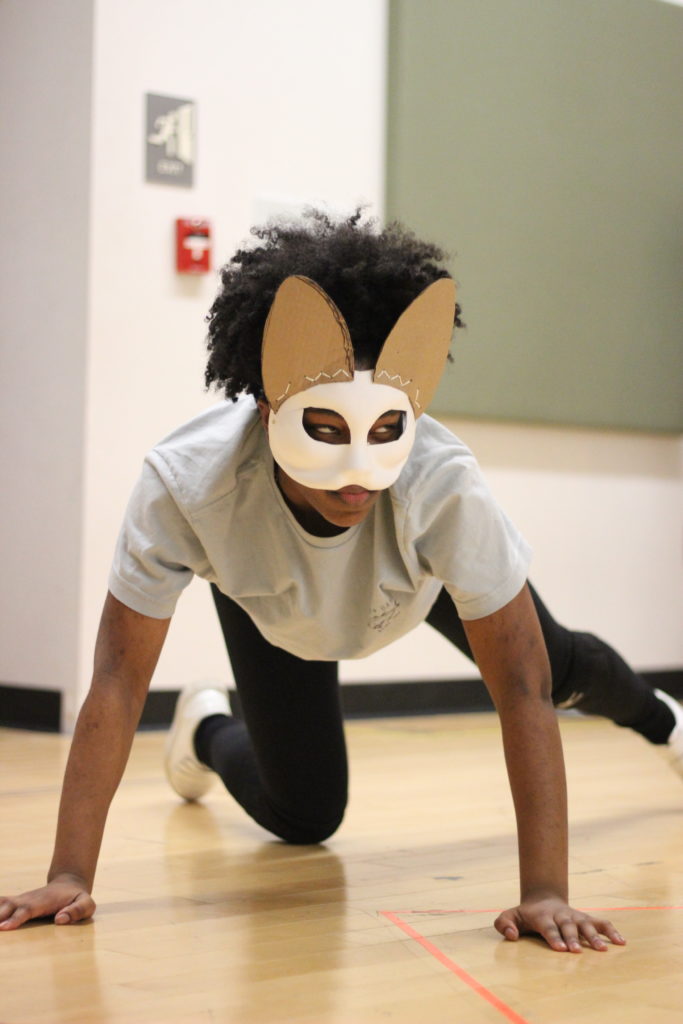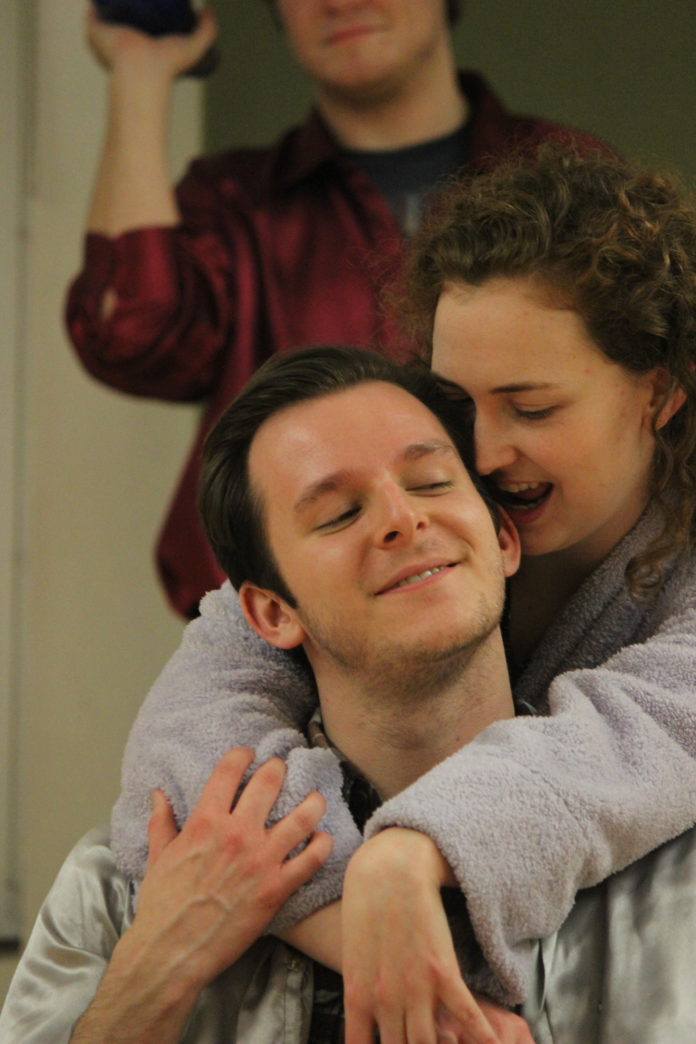For anyone that has taken part in a production before, we all know the feeling of walking into a rehearsal studio and not feeling that click. The electricity that comes from being onstage, or onset: it energizes your performance and makes all the pieces of a puzzle fit together. Knowing that I’d be going to watch Mr. Burns: A Post Electric Play in the rehearsal house, I was a little worried that the puzzle wouldn’t fit into place, and that I wouldn’t ‘get it.’ However, from the moment the rehearsal started, the cast brought me into their moments, as part of their campfire circle.
Although the bonfire camping scene is something everyone can picture, your sense of fun and nostalgia is quickly thrown out the window with the realization that the setting isn’t what it seems. The first act of Mr. Burns takes place shortly after the nuclear apocalypse, where six survivors have found each other and are trying to entertain themselves by recounting The Simpsons episode “Cape Fear.” Each character comes from a different part of the country, and Act One finds them in a moment together. Kevin Pugh ‘19 plays Matt, one of the survivors of the group, and describes what his character provides in the first act. “Matt is a guy who has been kind of just getting by, and he stumbles across this group of people who are a bunch of survivors. One night, they try to keep themselves entertained by talking about The Simpsons. Matt really likes The Simpsons, he talks about them alot.”
Matt drives the conversation of the first act, being the source to end any awkward pause that occurs between strangers. As Pugh puts it, “I think Matt provides morale for the group, especially in the early times.” The conversations that flow between the cast in the first act are incredibly intimate, drawing the audience into their dialogue, and they made me feel like a part of the action.
Moving into the second act, the Mr. Burns cast is seen seven years into the future, now a makeshift theatre troupe that performs episodes of The Simpsons to entertain their fellow survivors and make a living. Pugh and Krystal Hall ‘21 both see quite the transformation from the first act to the second act, when their theatre troupe is rehearsing their latest show. Hall described her character Colleen, saying, “Colleen has such a huge transformation and arch throughout the show because she goes from being a very quiet and shy person being haunted by her recent trauma that she endured to eventually becoming one of the main people in charge during Act Two.”
Pugh’s character, on the other hand, does not lead in the same way during the second act.
“Matt is definitely not a provider in any sort of physical sense,” Pugh explains, “We joke that Matt is just there for a good time. Matt is there for the apocalypse and a good time. In Act Two, we kind of have a business going, and Colleen has picked up the slack in an emotional sense.”
Act Two can be seen as a more classically written play, but keeps the nuances of real people having actual relationships instead of a scripted narrative. During their rehearsal scene, we see the characters creating makeshift TV screens and foley-style sound effects that slyly indicate the effects of living in a post-electric world. Act Two will give audiences the opportunity to laugh at familiarized TV tropes, but also notice the poignant moments that show a glimpse of what could be our society’s future.

Celeste Samson ’22 takes the stage in a masked costume for the production of Mr. Burns. Cole Geissler / The Muhlenberg Weekly
Act Three takes a drastic turn from the previous two, now using a futuristic combination of a Gilbert & Sullivan musical with masked theatre, stage combat, and more. Although Pugh and Hall are not in the third act, they and the rest of their cast members do an incredible job of supporting it and making it a connecting plot, especially when considering that the entire show revolves around one episode of The Simpsons. “We’re doing a lot of work to keep an audience interested in a single episode of The Simpsons, which is a half hour, to keep an audience interested for three hours. It’s been drilled into us that we have to keep the audience invested, I think we do so much work to support it,” Pugh said.
I have to agree with him. It was incredibly impressive with how all three acts merge together to form a concise, jaw-dropping production.
What impressed me most about the first two acts was how incredibly close the cast was, and how they kept every interaction fresh despite their working together for almost two months. When asking them how the cast has bonded and the work they’ve done to keep every interaction new, Pugh and Hall cited similar sources. “Our cast, in my opinion, really bonded when we came back from break a week early to exclusively work on developing our characters and piecing together our own individual backgrounds and how this plays into the world of the play,” Hall stated. Pugh also described the cast’s work together, saying, “We spent a time talking about how we met each other, how we got to this place, what happened to us prior, what happened two weeks ago, what happened before the show starts. It’s easier to act like you don’t know someone when you do know them really well.”
Looking over the show as a whole, this is a production that no one at Muhlenberg should miss. Although I haven’t had the privilege of seeing every character in full costume on a decked-out stage, I realized while watching the rehearsal that they don’t need it to be an excellent show. Through temporary props and costumes, this cast painted an incredible detailed look into what Pugh calls, “a cautionary tale,” that can compel any audience member to look carefully at their actions and how they have developed relationships with other people and the Earth. Every cast member’s energy and acting contributes to making the production truly riveting and immersive; adding set, props, and costumes will only enhance the show to make it even more incredible.
Be sure to check out Mr. Burns: A Post Electric Play from Feb. 20-24 for, if anything, a truly fantastic production.






















